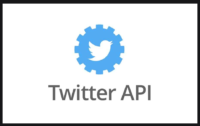Power BI and Tableau: A Comparative Analysis
What is Tableau and Power BI?
Tableau and Power BI are both powerful business intelligence (BI) tools designed to help organizations collect, analyze, visualize, and present their business data to support informed decision-making. In today’s increasingly data-driven world, the choice of BI tool can have a significant impact on a company’s ability to generate meaningful insights and make strategic decisions.
Microsoft Power BI and Tableau are two of the most widely-adopted BI platforms on the market, each offering a unique set of features and capabilities that may sway an organization’s preference. This article provides a comprehensive comparison of these two leading BI tools, examining their similarities, differences, advantages, and disadvantages across key factors such as cost, integration, ease of use, and overall functionality.
Click to learn more about Power BI and Tableau
Power BI
Power BI is a business analytics service developed and maintained by Microsoft. As part of the broader Microsoft ecosystem, Power BI integrates seamlessly with other Microsoft productivity tools like Excel, SharePoint, and Azure, making it a natural choice for organizations heavily invested in the Microsoft technology stack. It provides an intuitive interface that empowers even non-technical end-users to create interactive visualizations and custom dashboards. Its wide range of data connectivity options, powerful data transformation capabilities, and advanced analytical features allow users to pull in data from multiple sources, clean and prepare the data, and generate sophisticated reports and insights.
Advantages
- It’s Cost-effective
- Its Integration with Microsoft products
- Its user-friendly interface makes it ideal for beginners or those who are not deeply technical.
- Strong BI and data warehousing capabilities
Disadvantages
- Limited to Windows
- Performance with large datasets
- Less flexibility with advanced analytics
Tableau
Tableau is a powerful data visualization and business intelligence software managed by Salesforce that allows users to interact with and explore large, complex datasets in a highly intuitive and interactive manner. Unlike traditional data analysis tools that often require extensive technical expertise and coding skills, Tableau provides an intuitive drag-and-drop interface that empowers users from diverse backgrounds to easily create visually stunning and informative dashboards and reports.
Tableau’s user-friendly design and powerful visualization features have made it a popular choice among businesses and organizations of all sizes, from small startups to large enterprises
Advantages
- Advanced visualizations and analytics
- Better handling of large datasets
- Cross-platform support
Disadvantages
- Not cost effective
- Steeper learning curve
- Less seamless integration with Microsoft products
Differences
| Factors | Power BI | Tableau |
| Cost Effectiveness | Power BI is renowned for its cost-effectiveness. It’s offers free version with limited capabilities and cost-effective Pro licenses. | Tableau’s pricing is generally higher, with a more complex pricing structure. While it offers a free public version and more advanced tiers, the overall cost can be prohibitive for smaller organizations or those with tight budgets. |
| Integration | Power BI seamlessly integrates with other Microsoft products such as Excel, Azure, and SharePoint, this provides additional value especially for organizations already using Microsoft products. | Connects to a wide range of data sources, both on-premises and cloud. |
| Functionality:
Visualization |
Power BI provides a wide range of data visualization options and custom reporting capabilities. While it may not offer as many advanced visualization features as Tableau, its core functionalities are robust and sufficient for most business needs | Tableau is renowned for its advanced data visualization capabilities and extensive customization options. It excels in scenarios requiring complex visualizations and detailed analytical insights. |
| Community & Support | Strong community support, with robust Microsoft support and resources | Large, active user community, extensive online resources, and professional support |
Ultimately, the choice between Power BI and Tableau will depend on an organization’s specific needs, existing technology infrastructure, data complexity, and the technical expertise of the users. Data analysts should carefully evaluate the strengths and weaknesses of each platform, as well as their long-term strategic goals to determine the BI tool that best aligns with their requirements and delivers the most value.







